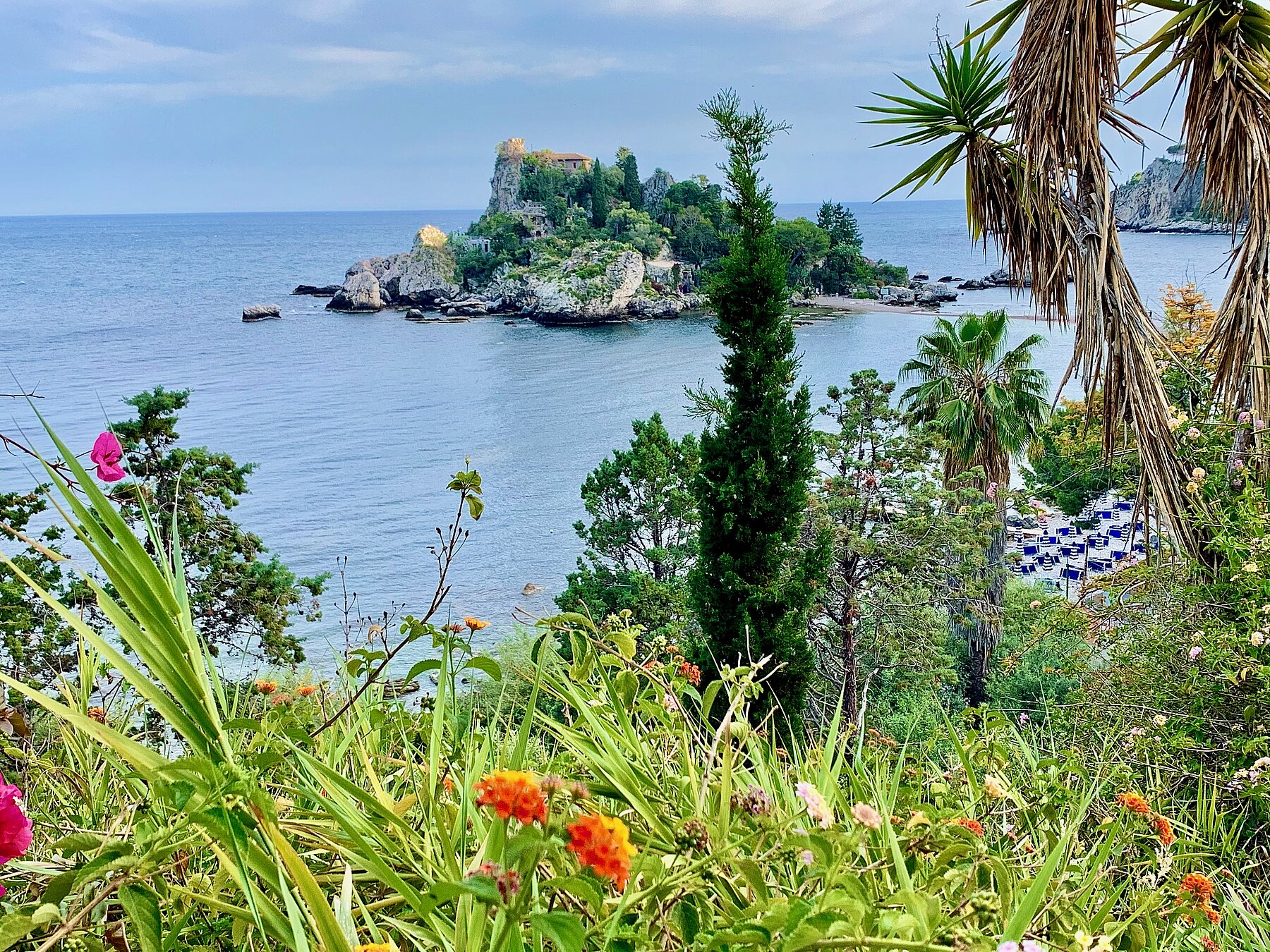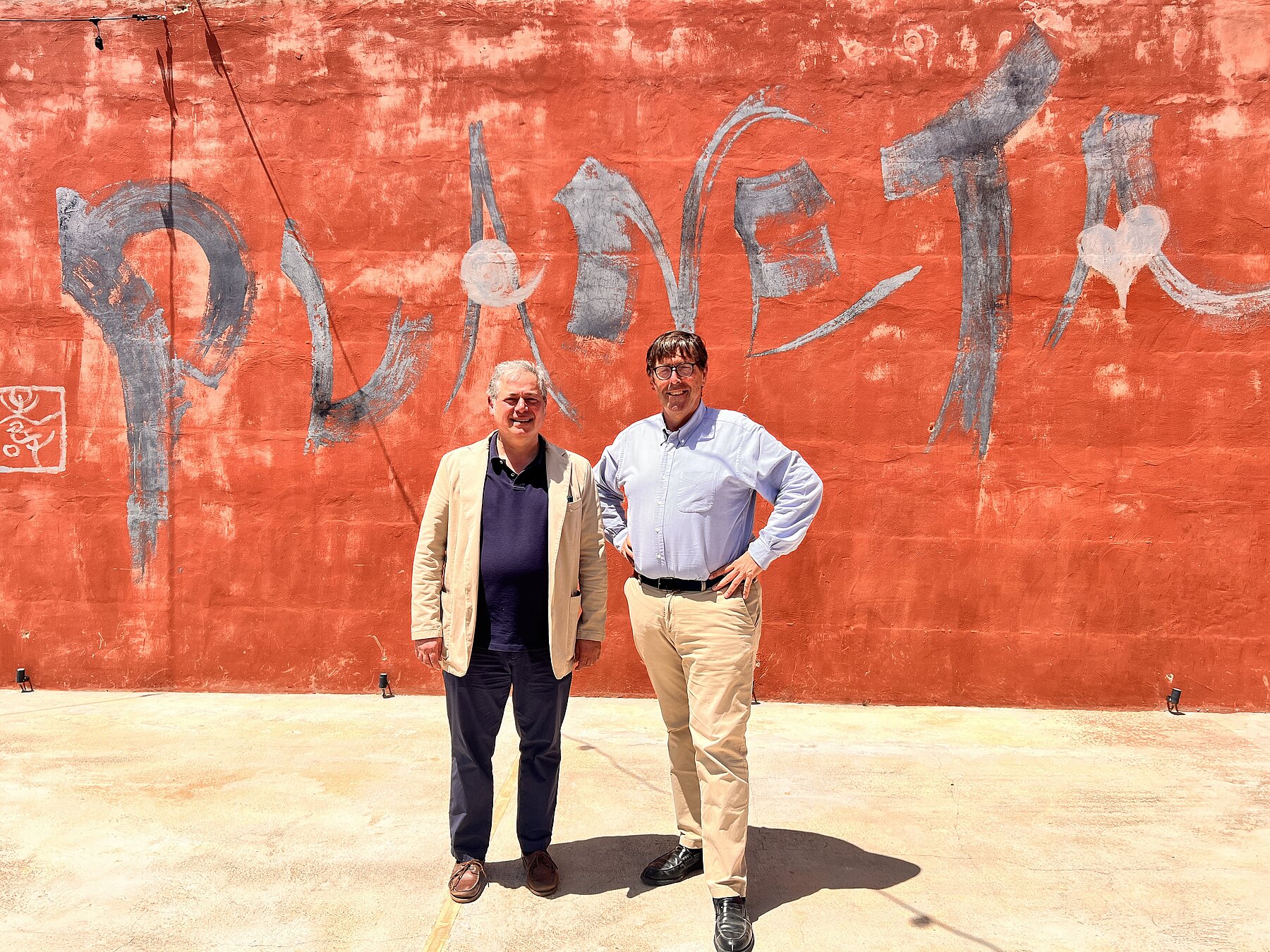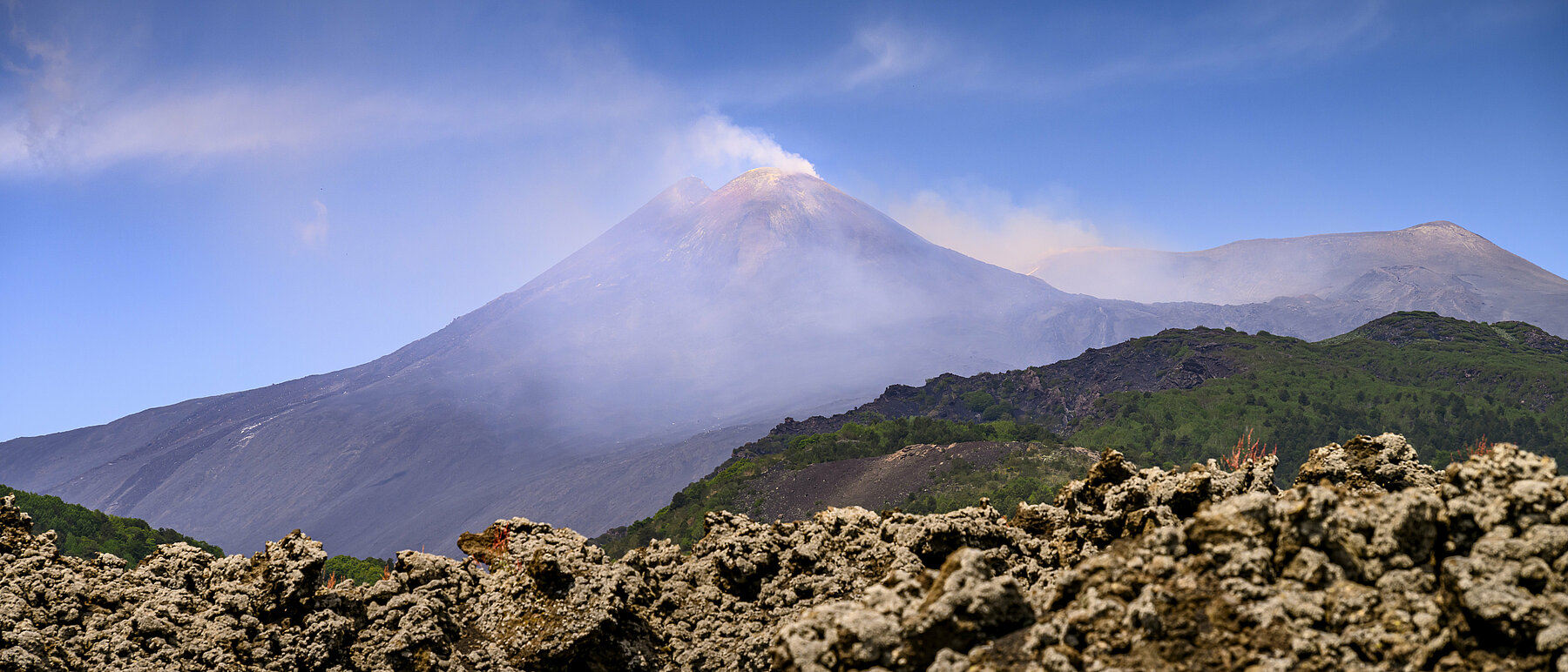
Particularly in the hotspot of Mount Etna, but also in other growing areas of the island, independent wines with a character of origin grow. © Leif Carlsson
Sicily's indigenous renaissance: the magical wines of Mount Etna
In hardly any other Italian wine region has as much changed over the past two decades as on the country’s largest Mediterranean island. For a long time, Sicilian wines were seen as Italy’s answer to the New World. But after the boom in international grape varieties, winemakers are increasingly refocusing on native ones. Especially around the hotspot Mount Etna, but also in other growing areas across the island, distinctive wines with a strong sense of place are emerging. The outlook remains highly positive: many of the wines I tasted at the excellent Sicily en Primeur event in May 2025 were truly impressive. With the 2021 and 2022 vintages, two outstanding years are now on the market — with 2021 standing out as a genuine benchmark. It is equally notable that the white wines continue to gain structure and character. Not only those made from Carricante on Etna, but also Grillo and Catarratto increasingly convey their origins and unique identity.
Sicily - an island full of contrasts
Anyone who knows Sicily knows that it is a fascinatingly beautiful island full of contrasts. When it comes to wine, it is like a wine continent. The wines are as diverse as the island's contrasting landscapes and cultural influences. From the snow-capped Mount Etna in the north-east to the arid brooding oven in the south of the island, wines are grown on different terroirs and microclimates, reflecting the varied landscapes. And after the great success of wines made from international grape varieties such as Cabernet Sauvignon and Chardonnay, which were once easier to market, a genuine indigenous renaissance has been underway for a good two decades. I already referred to this enormous indigenous heritage and its huge potential in my very first article 20 years ago.

The wines are as diverse as the island's contrasting landscapes and cultural influences.
Under the spell of the volcano
For many, Etna is currently the most exciting wine-growing region in Europe. Because what has happened here in the past two decades is simply phenomenal. My own journalistic career is also closely linked to this rise.
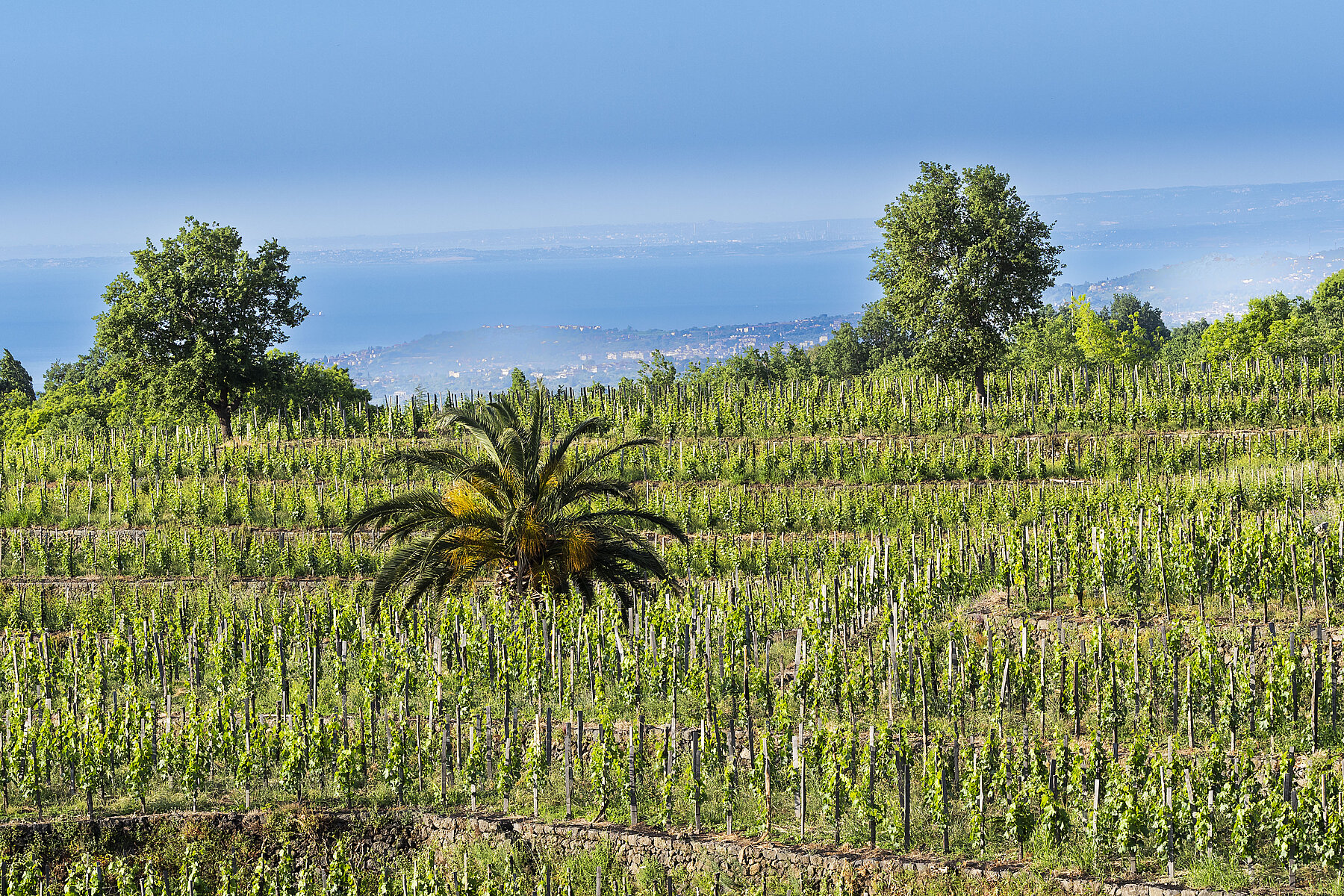
The vineyards, mostly elaborately terraced, are often still planted with very old, gnarled Alberello vines.
Because in 2004 I wrote my first wine journalistic article with the title "Sicily's autochthonous renaissance".
This was followed just over a year later by my award-winning article about the extreme viticulture on Mount Etna - and its unexpectedly cool and elegant wines. Back then, there were only a handful of winegrowers at work, but today there are around 170 producers who are making a name for themselves with their wines on the various slopes.
When I drove up the narrow winding roads to Mount Etna for the first time in 2003, two things immediately caught my eye: the omnipresent solidified black lava flows, which have an unreal character, often populated by glowing yellow broom bushes - a veritable sea of black and yellow, which evokes associations with the north curve of the BVB soccer club among soccer fans. Some of the vineyards are similarly steep. On the other hand, there are the sometimes steep, often elaborately terraced vineyards with their very old, gnarled Alberello vines, which are fortunately still widespread here. The fact that the old Etna grape varieties such as Nerello Mascalese and Nerello Cappuccio for the reds and Carricante and Minella for the whites have also come more into focus in recent years is a logical continuation of this return to the past.
The Etna pioneers
The long-established Cavaliere Giuseppe Benanti did some real pioneering work on the volcano. Together with his former oenological advisor Salvo Foti, one of the most sought-after experts on the island's indigenous grape material, they were already convinced of Etna's great potential back in the 1990s.
At a time when Etna was in a deep slumber and vineyards were still being cleared because they were uneconomical. Today, the top vineyards are more sought-after than ever before and reach astronomical prices. And anyone who tastes an old "Pietramarina" Etna DOC from the white Carricante grapes, which grow at around 900 meters above sea level, can sense that top wines have been made here for a long time. White wines that can easily mature for 20 years and are blindly reminiscent of a hypothetical blend of mature Riesling and Loire wines. Even today - or again - Pietra marina is a cult wine that exemplifies the unmistakable mineral and smoky character of the white wines from the south-west of the volcano around Milo.
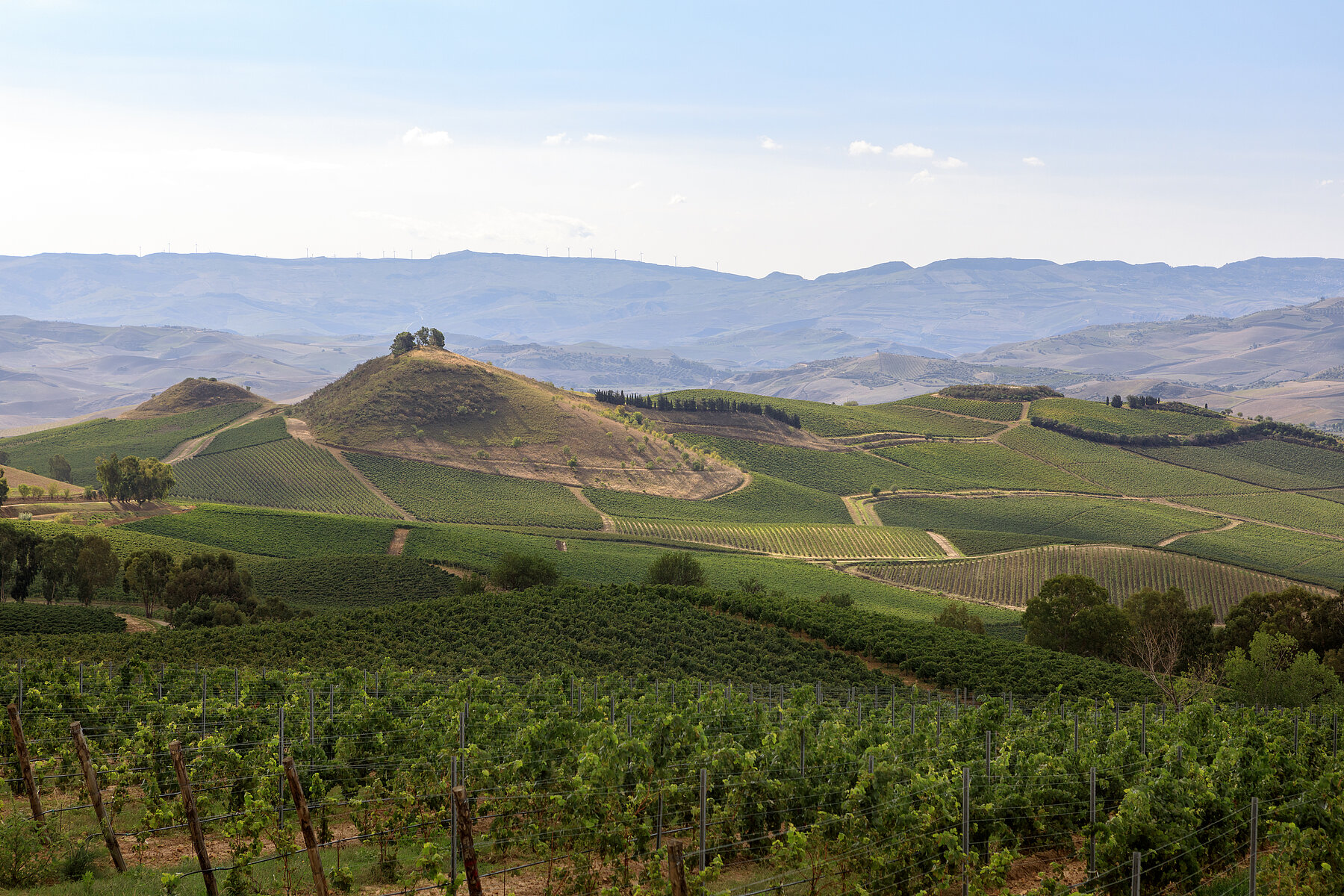
Where vineyards used to be cleared, the top sites are now more sought-after than ever before, reaching astronomical prices.
The same applies to a mature "Serra della Contessa" by Benanti from Nerello Mascalese from a 100-year-old vineyard with partly ungrafted vines.
Like a phoenix from the ashes
However, the decisive - and media - boost only came with the Etna newcomers Andrea Franchetti from Passopisciaro and Marc de Grazia from Tenuta delle Terre Nere. Their crystal-clear red wines of Burgundian elegance, which are produced on the northern slope of the volcano, triggered a real boom.
These were later joined by flagship wineries such as Planeta, Cusumano and Tasca d'Almerita, which acquired impressive terraced vineyards surrounded by old lava dry stone walls in the Contrada Sciaranuova at 750 meters above sea level. Through major investments and constructive cooperation with the existing local businesses, they have revived the centuries-old winegrowing tradition on Etna on a broad basis.
They were all committed to one thing above all: The further development of the appellation according to the Burgundian cru principle, i.e. the elaboration of origins, which here - unlike the narrowly defined single vineyards - are defined somewhat more broadly as contrade. Today, a catalog of these "contrade" has been created, which emphasizes the different origins in order to bring the resulting individual characteristics of the micro-terroir to the bottle
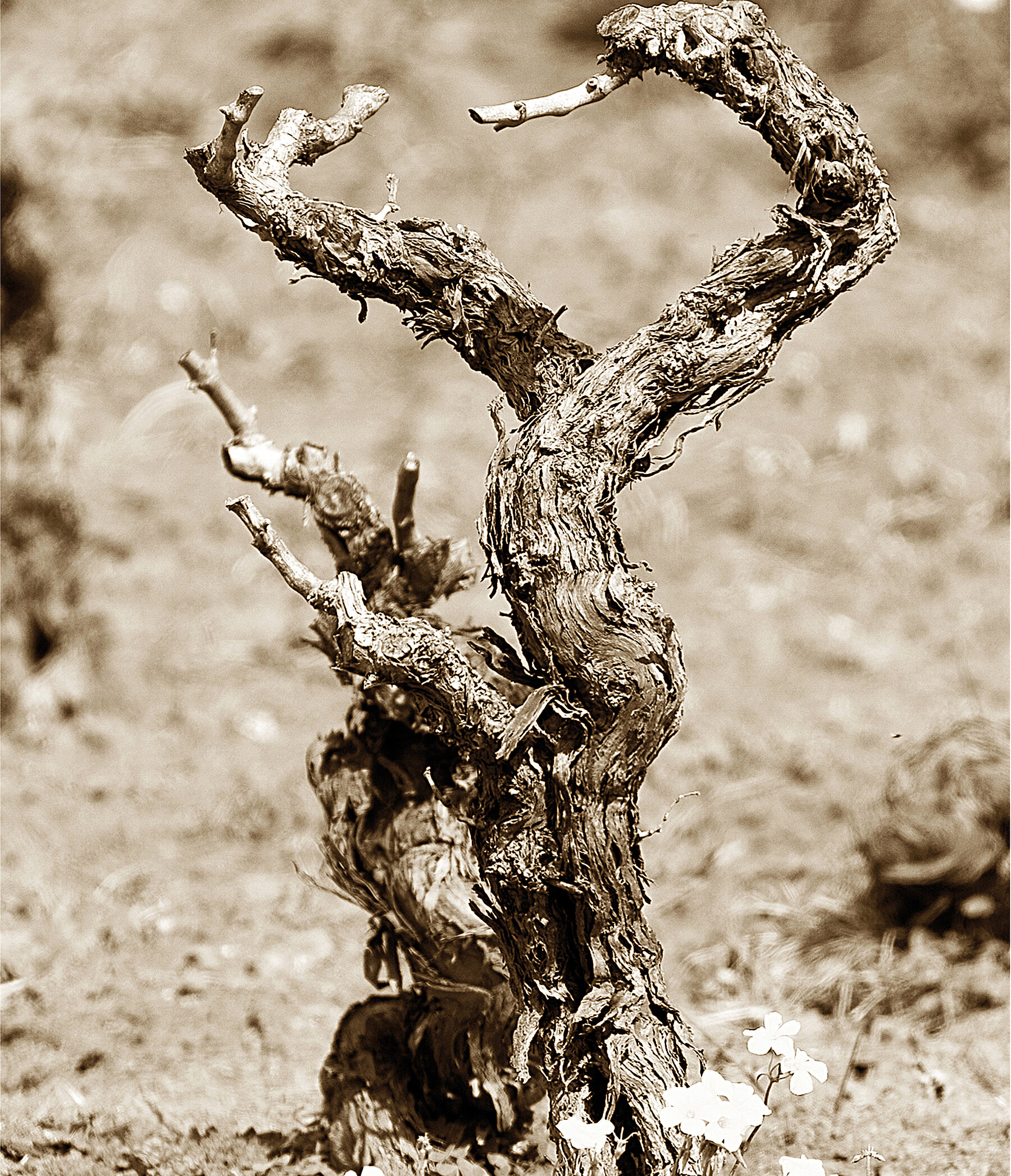
An old, gnarled Alberello vine that has defied the climatic challenges for years.
A process that is certainly far from complete, as Alberto Graci emphasizes: "Here on Etna, not only do the soil and microclimate change every few hectares, but also the altitude and the specific lava flow, i.e. from which eruption the lava underground originates. It could be a few hundred years old or it could come from the last major eruption in 1981, which changed the northern flank here."
The stories behind many a winery sound like the script for a movie. Like that of Alberto Graci. The son of a Sicilian farming family, he studied in Rome and became a successful investment banker in Milan at a young age. The death of his grandfather changes his steep rise. He returns and becomes a winegrower.
Although the price per hectare has increased almost tenfold since my first article, Andrea Franchetti, who sadly died too soon, was convinced that Etna was "still at the beginning of the boom". That's what he told me around five years ago.
He was proved right, because since then other wineries have sprouted like phoenixes from the lava ash. Franchetti was also the brainchild behind the annual "Contrade dell' Etna" event, at which all renowned Etna producers present their wines together.
There is no doubt that the region has been on the move for years and is attracting more and more winemakers and wine enthusiasts. One of the first was Frank Cornelissen. More than 20 years ago, the Belgian acquired a few good plots of land with old, ungrafted vines around Randazzo. With his controversial "non-intervention" style of natural and unsulphurized amphora wines with variable results, he has also contributed a great deal to the reputation of the appellation. His wines are now among the best-rated and most expensive wines on Mount Etna. Frank is to be congratulated, no one else in the whole of Sicily has achieved such a dramatic stylistic turnaround and increase in quality . Today, his wines from the individual contrade are strikingly mineral, tightly meshed and rich in finesse.
The magic of the mountain
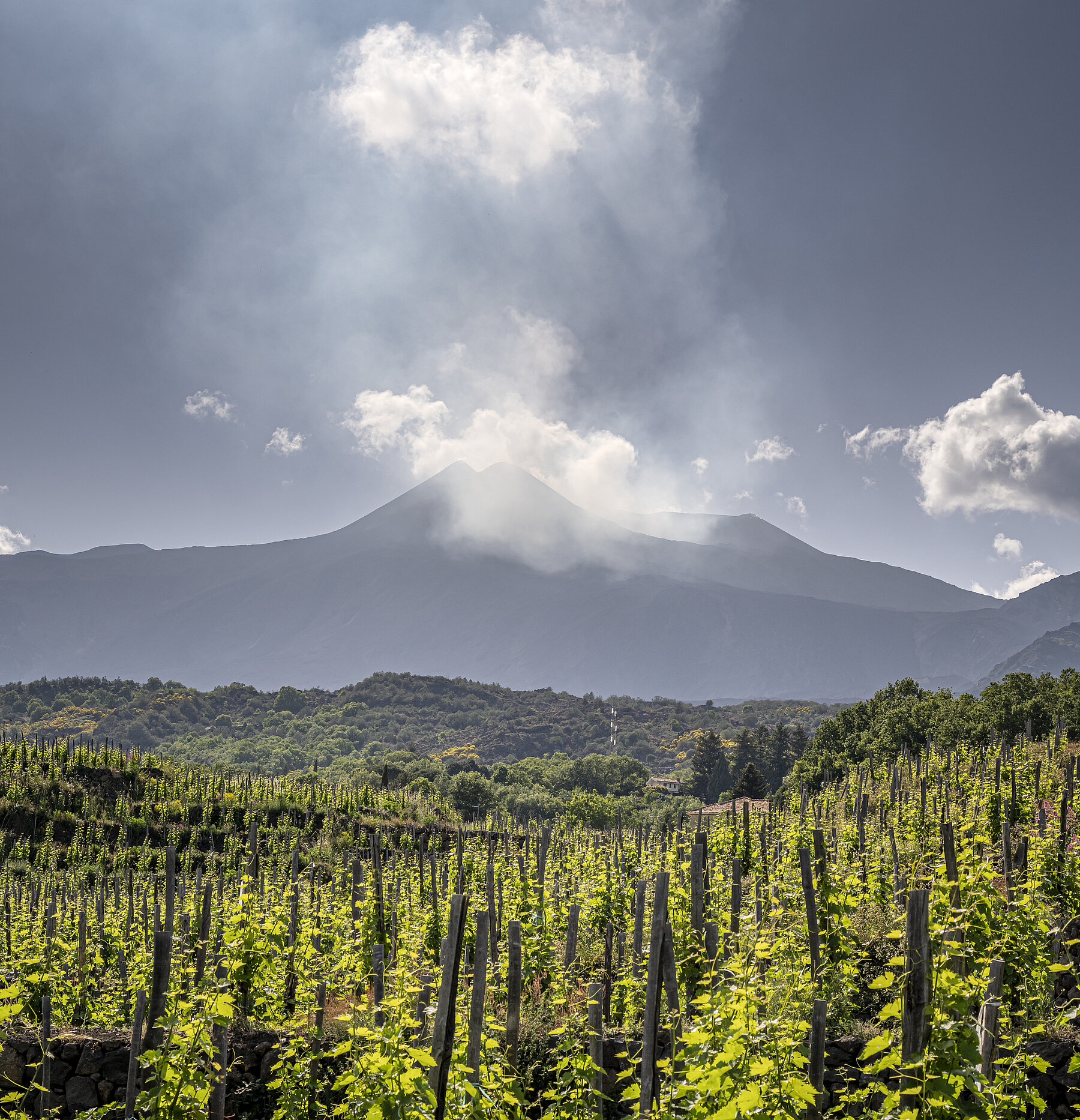
The volcanic soils around Mount Etna are rich in basalt, lava, ash and pumice. © Leif Carlsson
Winemaker Silvia Maestrelli from Tuscany (Tenuta di Fessina), who also died far too young, and Peter Wiegner from Switzerland, who fulfilled his dream of owning his own winery near Randazzo, which has been run by his son Marco for around ten years, also succumbed to the magic of the mountain. One of Italy's most sought-after top oenologists has also long been on Mount Etna. Together with his daughter Bianca, Carlo Ferrini has created a little gem called Alberelli di Giodo. Two wines that have it all. Mineral and straightforward, expressive and with elegant substance.
The number of newcomers is large. These include Tenute Bosco, founded in 2010, and Theresa Eccher, whose winery in Solicchiata (Castiglione di Sicilia) also has ungrafted prephylloxera vines. Another star in the Etna sky is the incredibly likeable Maugeri family. They mainly produce citrus fruit and, in addition to the winery currently under construction, run a super stylish spa hotel with a Michelin-starred restaurant that is well worth a visit and has a permanent place on the sumptuous menu of our wine tours. Even the successful and busy Eataly founder and Fontanafredda owner Oscar Farinetti from Piedmont could not resist the charm of the volcano.
In collaboration with the Sicilian wine entrepreneur Francesco Tornatore, he launched the Carranco project. The lively interest in old vineyards has also awakened the local winegrowers: It is pleasing to note that many young winemakers from Etna have long since become stars of the scene themselves.
Like the aforementioned Alberto Graci, who also produces the "Idda" wine line of the charismatic Angelo Gaja. His arrival on Mount Etna in 2016 caused a thunderclap.
Another home-grown talent is Giuseppe Russo, who actually wanted to become a musician. After the death of his father, he was faced with a decision: Music or look after the family's old vineyards. His wines have long been among the best in the appellation. Fortunately, the trend of young winegrowers preferring to work in the lucrative office rather than in the vineyard has been reversed. A sentence from my contribution that the jury of the "Premio Madre Mediterraneo" particularly liked at the time: "Why do people prefer an anonymous lawyer's job in foggy Milan to cultivating the heritage of unique 100-year-old vines on terraced lava soils?" I was inspired to write this sentence by Francesco Cambria, whose dedicated family is also one of the pioneers with the Cottanera winery.
His sister Mariangela Cambria is currently the president of the Assovini association and he himself is the president of the Etna consortium.
This is exactly what the "I Vigneri" project launched by Salvo Foti is all about. "We not only want to make authentic terroir wines and revive the age-old wine tradition on Mount Etna, but also give local farmers and young winegrowers a perspective with fair pay," explains Salvo Foti. Old vineyard sites are being restored and terraced with elaborate dry stone walls made of lava stone, "so that the know-how handed down over the centuries is not lost", says Foti. The former consultant to many Etna estates has long since built his own winery in Milo: in an ancient palmento well worth seeing, which he even still uses to make wine according to old custom.
Many latecomers, such as the Pietradolce winery, which is well worth seeing and artistically designed in black lava, have made it to the top in a decade. The winery is located in the sleepy village of Solicchiata.
The brothers Michele and Mario Faro - both passionate wine collectors and known beyond the country's borders as flower and large plant merchants - focus on the indigenous grape varieties Nerello Mascalese, Nerello Cappuccio and Carricante.

Another star in the Etna sky is the incredibly friendly Maugeri family.
The Pietradolce grapes thrive on eleven hectares of vines at 600 to 900 meters above sea level in prime locations, which have grown significantly in recent years due to acquisitions. The soils are stony and light, containing volcanic rock as well as sandy loam and many mineral elements. The exclusively family-owned vineyards are divided into different sections, the majority of which are located in the Rampante area and one in Zottorinoto .
The portfolio also includes two 80-year-old vineyards with Alberello training, one of which is located in a small wooded area as a rather unique amphitheater. The rare top wine Barbagalli grows there. The hard-working Giuseppe Parlavecchio is the farm manager here.
Wine-growing up to 1100 m above sea level.
Sicily's most extraordinary wines are produced on Etna' s steep lava soils, with a climate that is surprisingly cool for these latitudes: wines with great finesse and mineral coolness that benefit from the extreme day-night temperature differences and the mineral-rich soils. Surprisingly, not only the reds, but also the whites! The whites around Milo in particular have the potential to be among the best in Italy. The climate here is much wetter and the soils are different again.
Due to the extreme geoclimatic conditions at high altitudes, viticulture has reached its limits, especially in the north of the volcano: Extreme viticulture up to 1,100 meters above sea level - including capricious weather. The climate here is constantly changing. Depending on the area, the probability of rain is up to three times higher than in the rest of Sicily. The temperature differences between day and night are extreme. The soil structures are also constantly changing. And not all lava is the same. The soils range from black to reddish to yellowish lava sand, depending on the iron, sulphur and other mineral content.
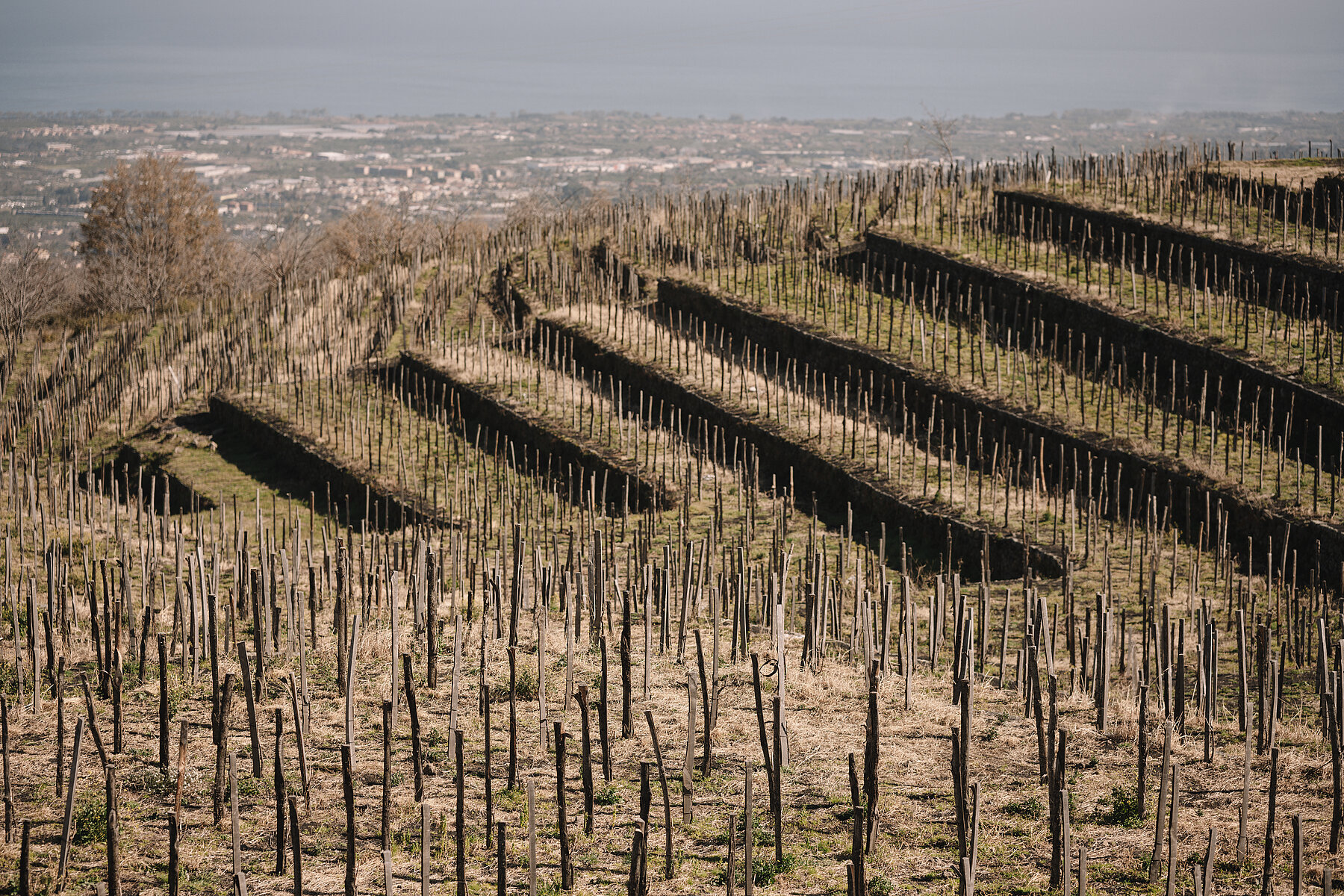
Alberello vines are often found in the old vineyards on the northern slope.
Etna alone is therefore a small wine continent in itself. The wines around the magical triangle of Randazzo - Passopisciaro - Castiglione in the north-east of the volcano taste even cooler and more elegant than those from the southern foothills: they are "cool-climate" wines that are more reminiscent of Burgundy or the wines from the Langhe in Piedmont.
Taut wines from the southeast
But in other parts of the island, too, there is a greater focus on origin. The south-east of the island in particular, between Vittoria, Noto and Pachino - for many the region of origin of Nero d'Avola - has been producing exciting wines for decades that have nothing, but absolutely nothing, in common with the jammy Nero d'Avola from other areas of the island.
Above all, the Gulfi winery, advised by Salvo Foti, stands for an unmistakable Nero d'Avola style. These Nero d'Avola vary depending on the type of soil, are taut and elegant, display an astonishingly nervy acidity structure and mature superbly.
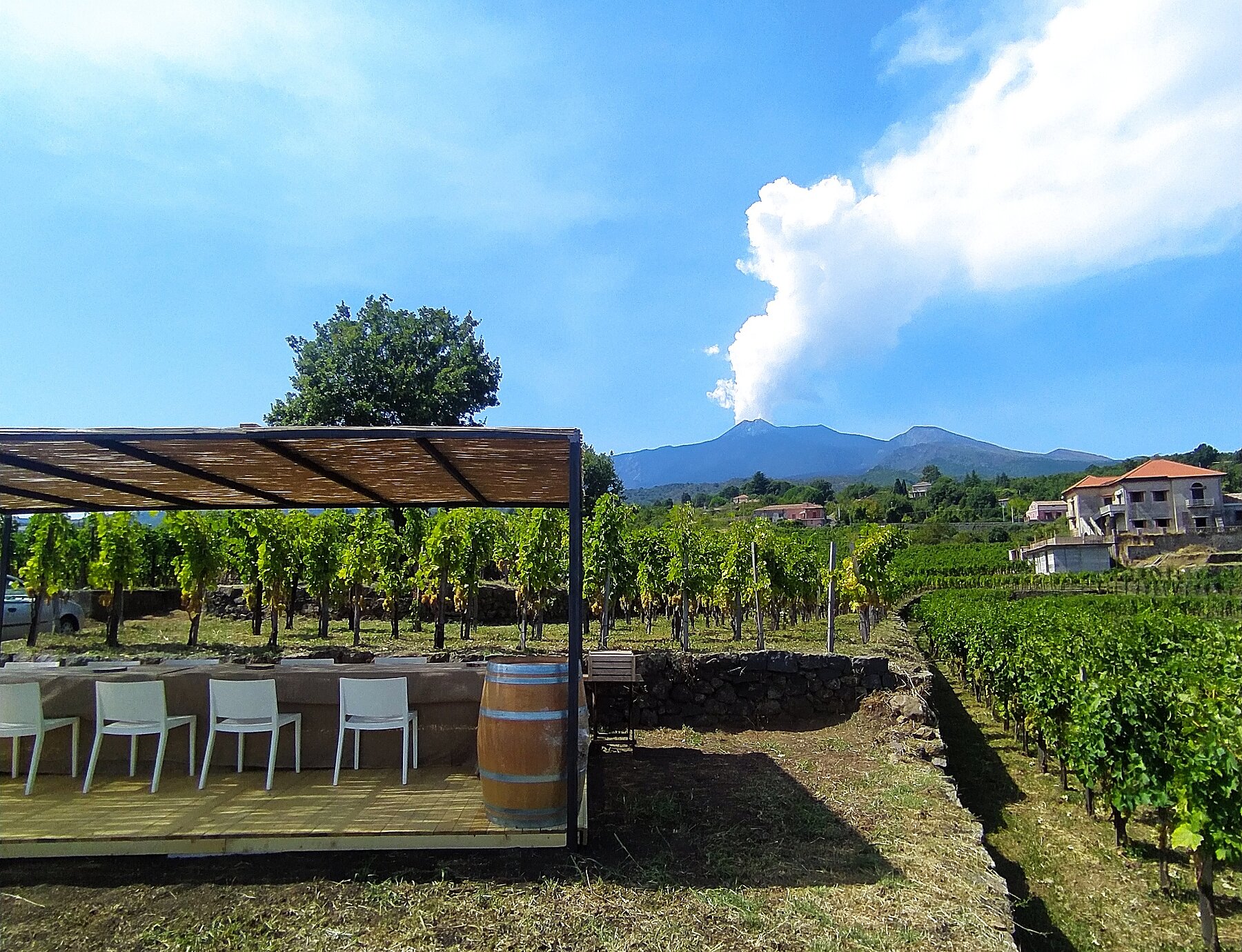
The microclimate is what makes viticulture in Sicily so special - from hot, dry plains to cool, breezy altitudes, the island offers ideal conditions for complex, characterful wines.
This also applies to Nero d'Avola from mountainous altitudes, such as in the interior of the island in the DOC Contea di Sclafani - where Tasca d'Almerita has been producing an outstanding Nero d'Avola on its flagship Regaleali estate for decades, which sets the tone for the "Rosso del Conte". The single-varietal Cabernet Sauvignon and even more so the Chardonnay Vigna San Giuseppe are wines that need fear no international comparison.
The same applies to the excellent wines from Planeta, Cusumano or Donnafugata, whose sweet wine Ben Ryé from the beautiful island of Pantelleria is a kaleidoscope of the best Sicilian patisserie art, while the wines from the only DOCG zone around Vittoria are also independent and have a clear profile. The "Cerasuolo di Vittoria", made from Nero d'Avola and Frappato, is a highly individual wine. A historic cuvée that is pure drinking pleasure even when slightly chilled. The aromatic Frappato gives it an uncopyable elegance and lightness. With its light color and crisp, fresh notes of raspberries, strawberries, mint and red currants, it is more reminiscent of a light Gamay than a wine grown not far from the African coast. And often at a moderate 13.0% by volume.
Long-established wineries such as COS, where the amphora sets the tone for some of the wines, or Valle dell'Acate have been producing wines full of character here for years. The single-varietal Frappato wines are particularly exciting. The biodynamic winemaker Arianna Occhipinti, the niece of Giusto Occhipinti from COS, one of the pioneers, has long been a celebrated star in this region. In the microclimate of Vittoria, where a fresh sea breeze cools the vines, the spirited Sicilian produces independent terroir wines with rough edges that are among the best on the island.
Sicily is a wine continent - autochthonous renaissance
But back to diversity and the wine continent: this is exemplified by the long-established flagship wineries such as Planeta and Tasca d'Almerita, which have vineyards in different areas of the island: Their grape harvests stretch over three months! "We start in August with the early-ripening varieties in south-western Menfi and finish at the end of October with the Nerello Mascalese on Mount Etna," says Alessio Planeta.
In cool vintages, the harvest on Mount Etna can extend well into November, as Alberto Graci and Marc de Grazia report. It is actually hard to believe that such "cool climate" conditions prevail in the southern Mediterranean, producing wines with such a fresh and mineral character.
They are even experimenting with Riesling at around 900 meters above sea level. In Planeta's Etna cuvée "Eruzione 1614", five percent Riesling was added to the Carricante for a long time.
The La Baronia winery in Capo Milazzo opposite the Aeolian Islands is also part of Planeta, where the ancient Nocera grape variety is given a new lease of life.
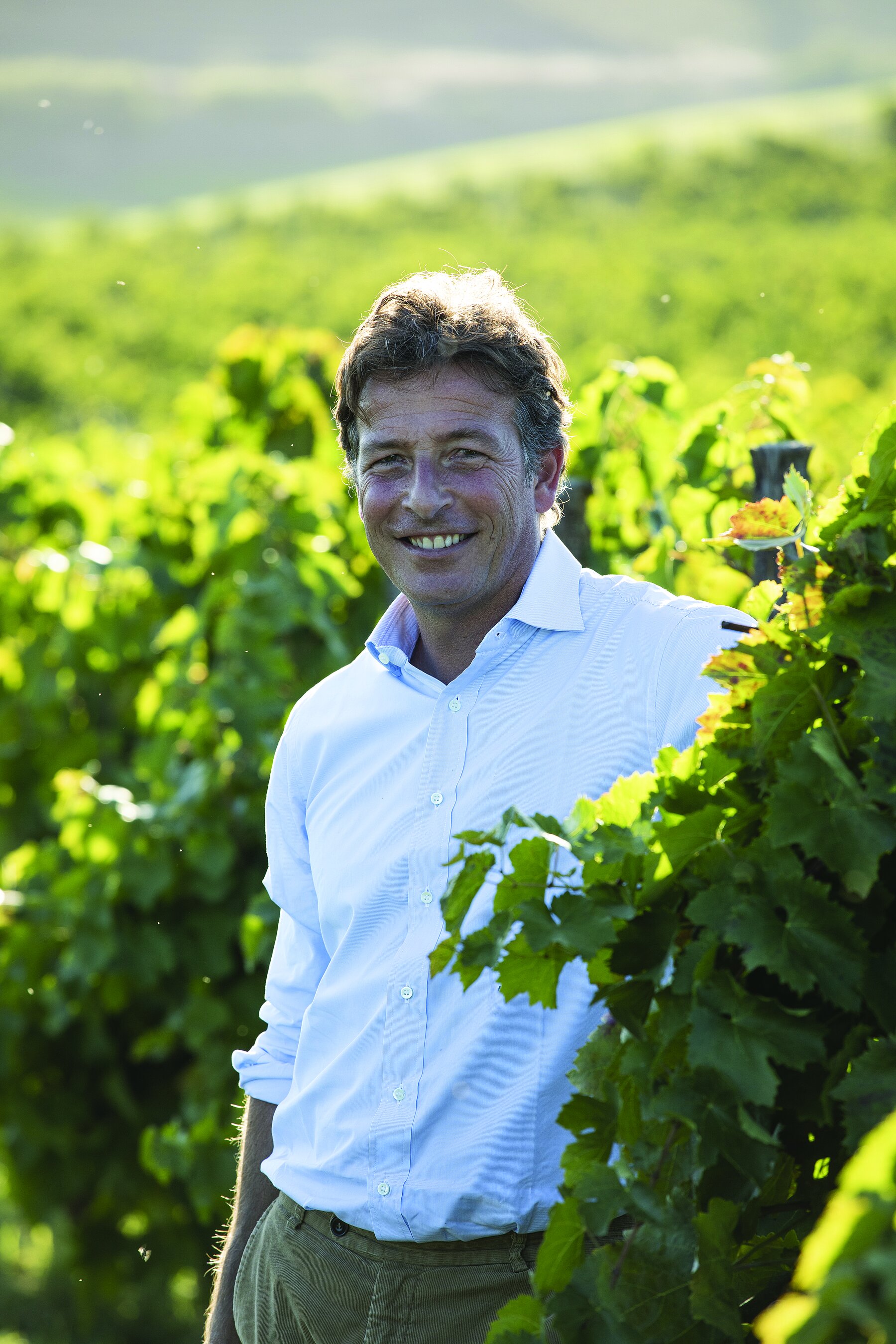
Alberto and Giuseppe Tasca are now the eighth generation to run the family winery and continue to run it according to the family motto: preserve tradition and make room for innovation.
Tasca d'Almerita, run by Giuseppe and Alberto Tasca, is another such jewel in the crown. Their father Lucio revived the Grillo on the small Phoenician island of Mozia: a great mineral white wine for relatively little money. Equally impressive is their commitment to the beautiful island of Salina, where Tasca produces a wonderfully palatable and aromatic Moscato and ran the magnificent 5-star Hotel Capofaro right by the sea for a long time.
Elsewhere, too, traditional grape varieties such as Perricone, Grillo, Inzolia, Catarratto, Moscato and Malvasia are increasingly setting the tone. The latter two are particularly suitable for the remarkable Passito wines - real local treasures that show origin and individuality. Sicily can continue to build on these autochthonous roots, and I was already convinced at the time that the use of autochthonous or other Mediterranean varieties would be more appropriate to the changed climatic conditions, possibly due to historical adaptation. This attitude seems to have prevailed. It is not only in Sicily that people are now convinced that proven DNA material should be used with a view to epigenetics.
And the outlook remains positive: many of the wines I tasted in May on my individual wine tour and at the fantastic Sicily-en-Primeur event were impressive. And with 2021, one of the best vintages of recent years has been released. The tasting notes of the most recent vintages are mainly from the annual and well-organized event "Le Contrade dell Etna" and from my private wine trips. More notes will follow soon in a large Sicily special, which will take into account the great diversity of the island.
By the way: If you would like to see the uniqueness up close, my culinary wine tour will take place again next year. Interested parties are welcome to contact me by e-mail
➜ Die Verkostungsnotizen der besten Weine dieser Reise finden Sie als Abonnent in unserer brandneuen Datenbank mit einfachster Bedienung!
